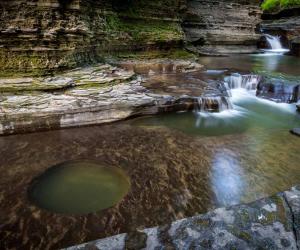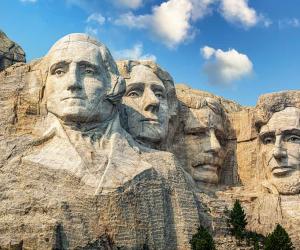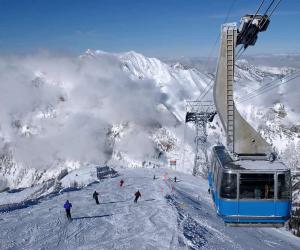What is New Hampshire Known For? 22 Things New Hampshirites Love About Themselves
is one of the original thirteen of the United States. It was originally populated by Native Americans before Europeans began to explore and settle the area in the early 1600s. New Hampshire is the site of many American “firsts,” and the residents of the Granite State have worked hard to conserve and celebrate their state’s accomplishments.
This state may be among the smallest in the country, but it has a rich history and vibrant culture. Keep reading to learn about the top 22 things that New Hampshire is known for.
1. Maple Syrup

©Jun Zhang/iStock via Getty Images
Springtime in New Hampshire is the season for . As thaw in the spring, the sap inside the tree begins to mobilize and causes a build-up of pressure. Between mid-February and mid-April, maple farmers tap their trees and insert a spout, which allows the sap to drip out where it is collected into buckets.
From there, the clear sap is boiled until it becomes thick and amber-colored maple syrup. It takes around 40 gallons of sap to produce one gallon of maple syrup. New Hampshire produces nearly 90,000 gallons of maple syrup each year!
2. Granite
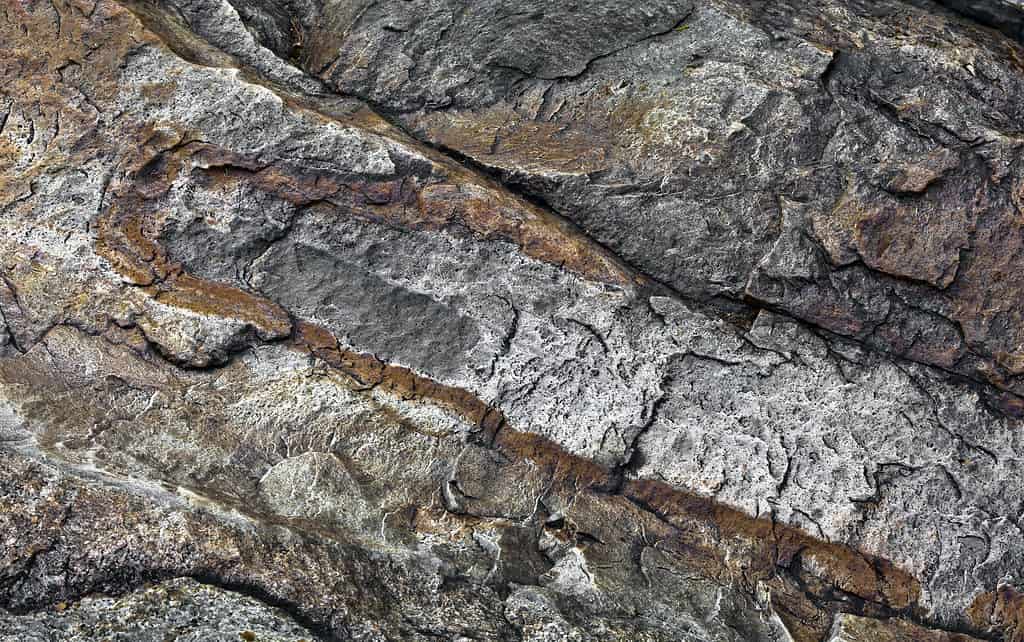
©John A. Anderson/Shutterstock.com
Nicknamed the State, New Hampshire is known for its vast deposits of igneous rock. Since the 19th century, granite has played a major role in the state’s economy, and granite quarries in New Hampshire have provided materials for everything from sidewalks to monuments.
Granite is a popular choice for construction due to its durability. It is removed from the earth via open pit mines called quarries. Workers drill or blast into the stone, then cut it into slabs which get transferred to facilities for further processing.
3. The Old Man in the Mountain
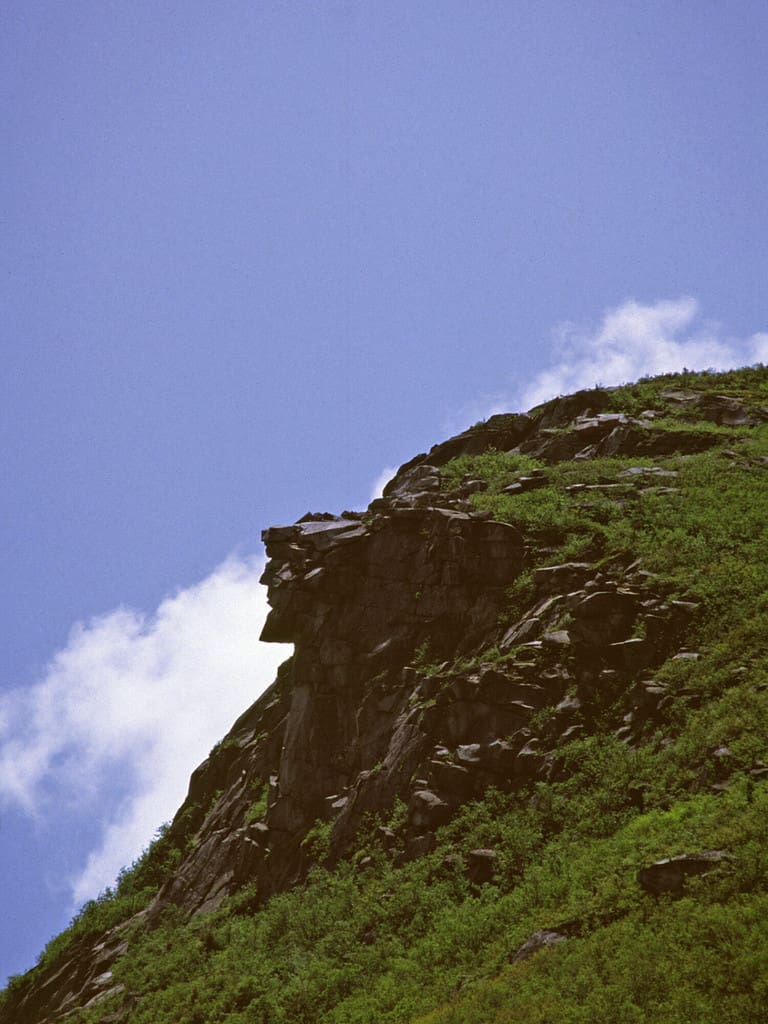
©Wayne Johnson/Shutterstock.com
Up until 2003, the was one of New Hampshire’s most iconic sights. The naturally occurring rock formation, located in the White Mountains, had the distinct appearance of a face in profile, gazing out over the state’s wilderness. However, in May 2003, the rock formation collapsed.
These days, the Old Man in the Mountain can be found on the state’s license plates, the state’s quarter, as well as commemorative items in gift shops across New Hampshire. In Profiler Plaza, a memorial helps guests visualize the Old Man in the Mountain as it once stood. Even though it no longer exists, this rocky outcropping remains a source of pride for New Hampshirites.
4. First Public Library

©GNT STUDIO/Shutterstock.com
The residents of New Hampshire have been long-time supporters of . The New Hampshire State Library was the first state library in the nation. Established in 1717, this library got its start when the state assembly declared that law books should be distributed amongst local towns.
Additionally, the state has the distinction of being the home of the nation’s first public library. The town of Peterborough, New Hampshire opened the first tax-supported public library in 1883, and in 1889, the state enacted legislation that authorized the creation of public libraries.
5. Low Taxes
Aside from Alaska, New Hampshire is the only state without an , making it one of the states with the lowest tax burden for its residents.
For the past 40 years, most politicians in New Hampshire have taken, “The Pledge,” which assures voters they will not attempt a large-scale increase in taxes. However, residents in the Granite State pay higher-than-average property taxes.
6. First to Declare Independence

©David Smart/Shutterstock.com
New Hampshire played a crucial role in the development of the United States and its government. On January 5, 1776, the moved to establish a state constitution based on the free suffrage of its residents. With this decision, New Hampshire became the first of the 13 colonies to assert its independence from Great Britain.
The state’s original constitution was a mere two-and-a-half pages long. State leaders revised their constitution following the Revolutionary War in 1784, and that version stands today.
7. Mount Washington
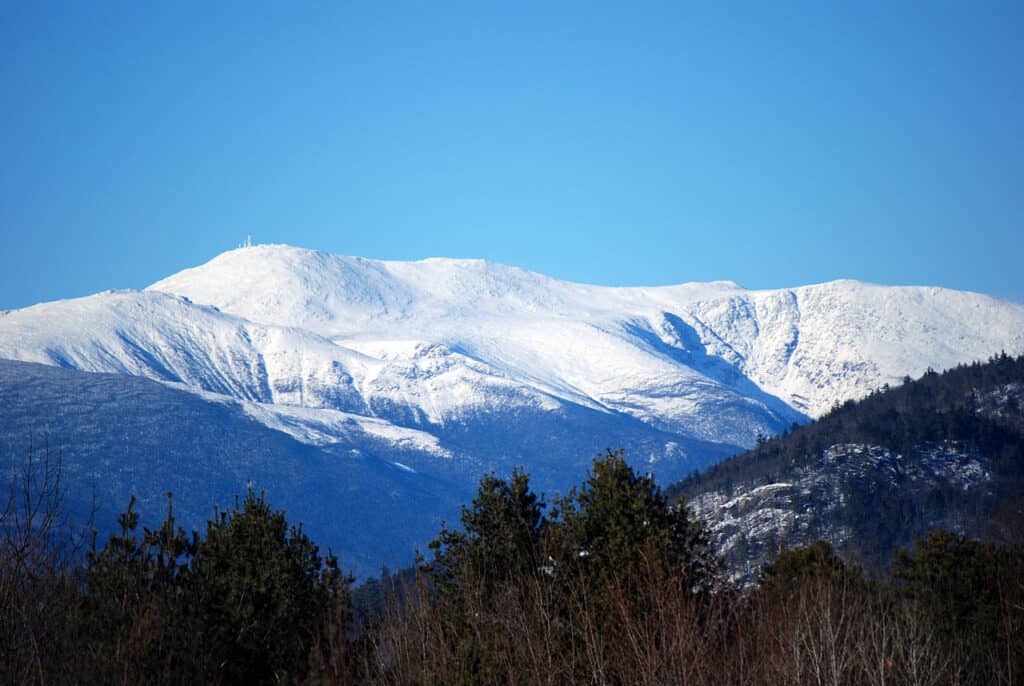
©Harvey Barrison / Creative Commons –
New Hampshire’s tallest peak is also the tallest peak in all of New England. is 6,288 ft. above sea level, and it is a popular destination for local residents and tourists.
Located in the White Mountains, Mount Washington offers hundreds of miles of hiking trails. Mount Washington also houses a ski resort and nearby towns with restaurants and attractions. However, due to its elevation, the area is prone to .
8. Mount Washington Cog Railway
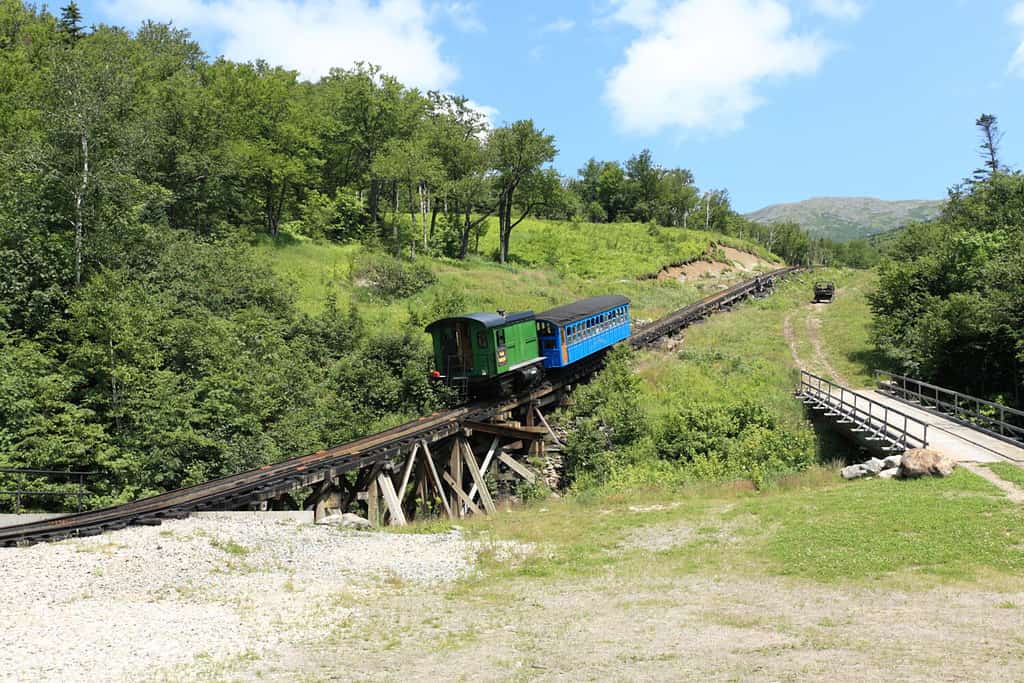
©KAZMAT/Shutterstock.com
The is an engineering marvel. At the time of its completion, the cog railway was the first in the world to climb a mountain. Its specially built system of cog rails allowed trains to travel up the mountain at grades of 37%, making it the world’s steepest rail line.
Construction on the railway began in 1866, and in 1869, the railway began to operate, carrying tourists to the summit of Mount Washington. Cog trains could complete the three-mile journey to the top of the mountain in about 70 minutes.
9. First American Alarm Clock
In 1787, New Hampshirite wanted to wake up at 4:00 a.m., but not even the crow that early. His solution was to invent what would be the first alarm clock in the country.
Hutchins applied his skills as a watchmaker to create a timepiece inside a pine cabinet. An internal brass mechanism rang once a day at 4:00 a.m. This early alarm clock was much larger than most modern alarms, at 29 inches by 14 inches.
10. Apple Cider Donuts
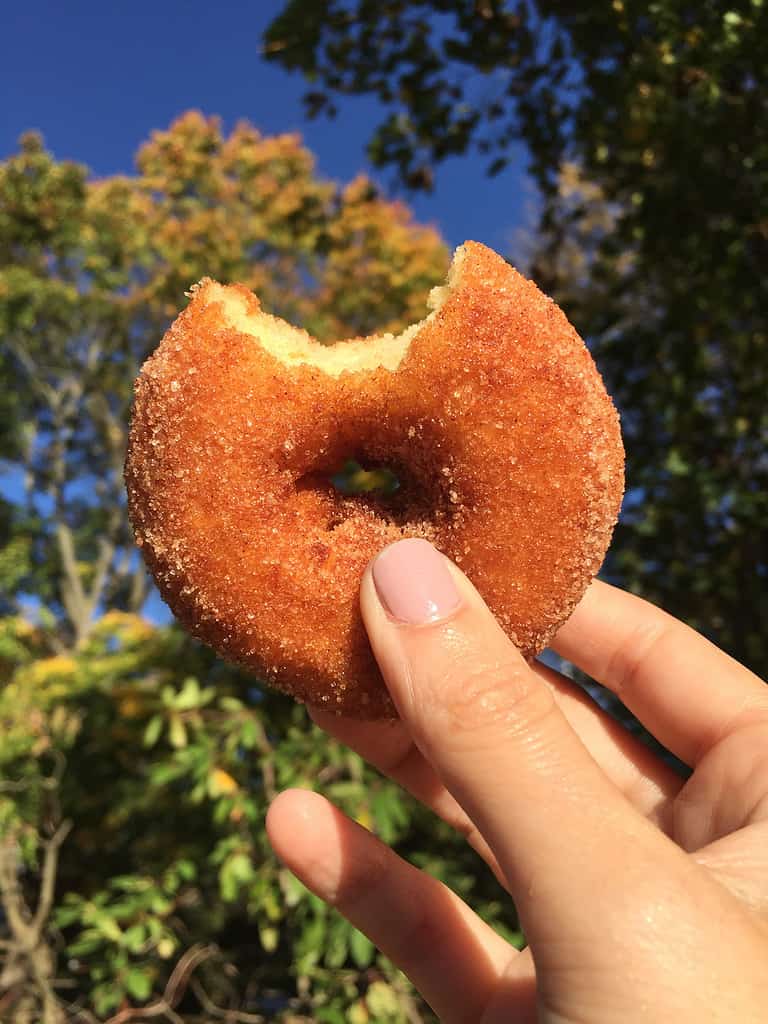
©Kristin Utzinger/iStock via Getty Images
With roots dating back to America’s early colonists, have been a long-standing fall tradition in New Hampshire and New England. The sweet treats were reportedly a way to use up surplus fat after the seasonal butchering of farm animals.
Colonists would mix basic dough for frying with in-season , then fry until crisp. The addition of apple cider into the mix would make the donuts even more tender and tangy, solidifying this desert as a local favorite in New Hampshire.
11. Castle in the Clouds
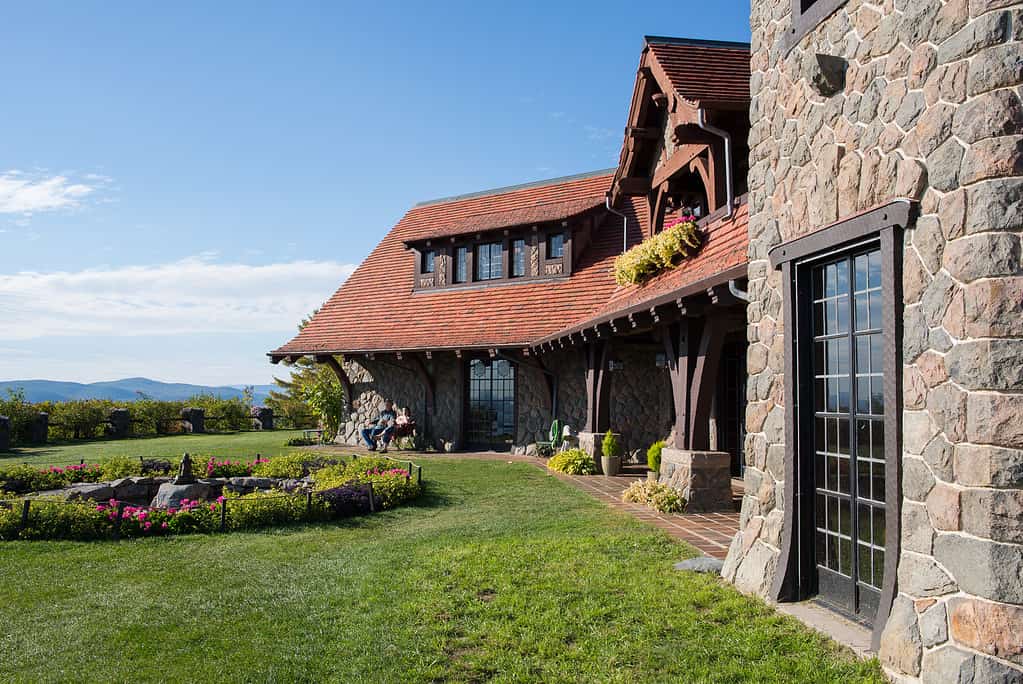
©Fletcher, CC / BY 4.0 –
This , built in 1914 by Tom and Olive Plant, stretches across 6,300 acres. The mansion contains 16 rooms and was built in the Arts and Crafts architectural style which valued elements meant to bring harmony with nature.
The Plants called their estate “Lucknow,” and it included a stable, greenhouse, golf course, miles of trails, and beautiful views of a man-made lake. Today, it is known as the Castle in the Clouds, and the estate offers tours, exhibits, programs, and activities that invite guests to enjoy the property and its surroundings.
12. Lakes
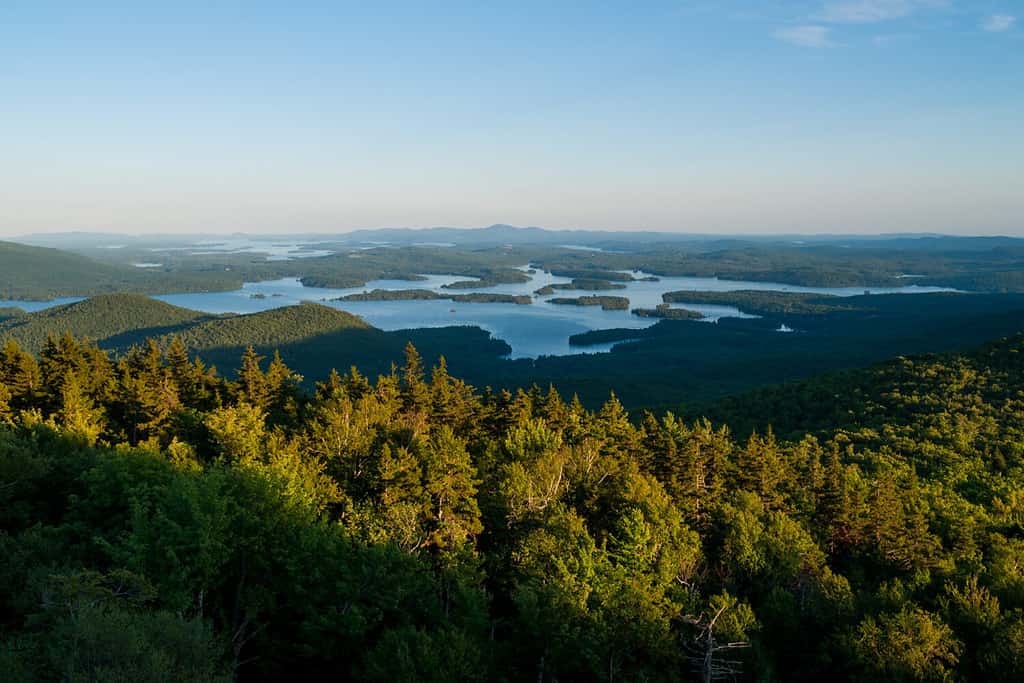
©Christopher Georgia/Shutterstock.com
Although it is among the smallest states in the country, New Hampshire boasts throughout its Lakes Region. is the largest lake in the state with a surface area of over 45,000 acres. It is a popular destination for swimming, fishing, and recreation.
Other lakes may be smaller, but they offer just as many opportunities for outdoor fun. At Lake Winnisquam, visitors can enjoy a unique rail bike tour, and Newfound Lake, one of the state’s deepest lakes, hosts several major events, including ice racing and marathons.
13. First Wind Farm

©BaLL LunLa/Shutterstock.com
The in the world was built in southern New Hampshire on Crotched Mountain. In 1980, 20 turbines were erected, each rated at 30 kilowatts. While this early wind farm would result in mechanical failures, the turbines in New Hampshire paved the way for future renewable energy.
The company that installed the turbines on Crotched Mountain would go on to be the world’s leading developer of turbines. While that company filed for bankruptcy in 1996, the legacy of its work is evident in the wind farms that have been constructed across the country.
14. First American in Space

©digitalmazdoor digitalmazdoor/iStock via Getty Images
The first American to travel in space, , was born in New Hampshire. Originally from Derry, Shepard conducted his fateful journey on May 5, 1961, when he flew in the “Freedom 7” capsule for 15 minutes before returning to Earth.
Today, Derry honors Shepard’s legacy with , a 36-acre space that was once part of the Shepard family’s homestead. The land is under a conservation easement in order to preserve its natural state, and it is a popular spot for hiking, snowshoeing, cross-country skiing, and picnicking.
15. State Motto
The residents of New Hampshire take their independence seriously with the , “Live free or die.” The phrase is attributed to General John Stark, who served during both the French and Indian and Revolutionary Wars.
He was invited to a reunion of veterans but was too unwell to travel. Instead, he sent a letter and included the toast, “Live free or die. Death is not the greatest of evils.” Since then, the saying has been featured on the state’s license plates and the state quarter and is a proud reminder that New Hampshire is known for its fierce defense of independence.
16. New Hampshire House of Representatives
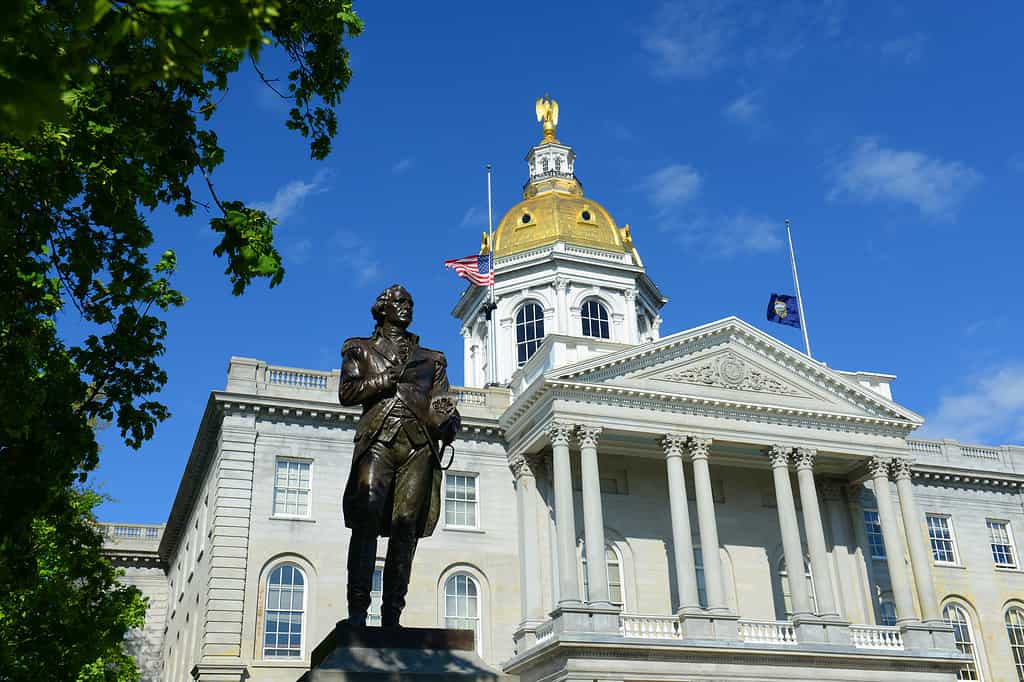
©iStock.com/jiawangkun
In keeping with New Hampshire’s enthusiasm for governance, the New Hampshire is the largest house of representatives in the nation and the largest legislative body in the world.
With 400 members representing 204 districts, residents of the Granite State value having direct access to their representatives. Members meet at the New Hampshire State House, located in Concord, which is the in the country.
17. First Presidential Primary Elections
New Hampshire plays a pivotal role in U.S. presidential elections by holding the in the country. In 1913, the state passed a law creating a direct primary which allowed all eligible residents to vote.
The law took effect during the 1916 presidential race, although New Hampshire did not earn the distinction of holding the nation’s first primary until 1920. Since then, the state has become an important campaign stop for presidential candidates looking for an early win during primary season.
18. First Women’s Strike
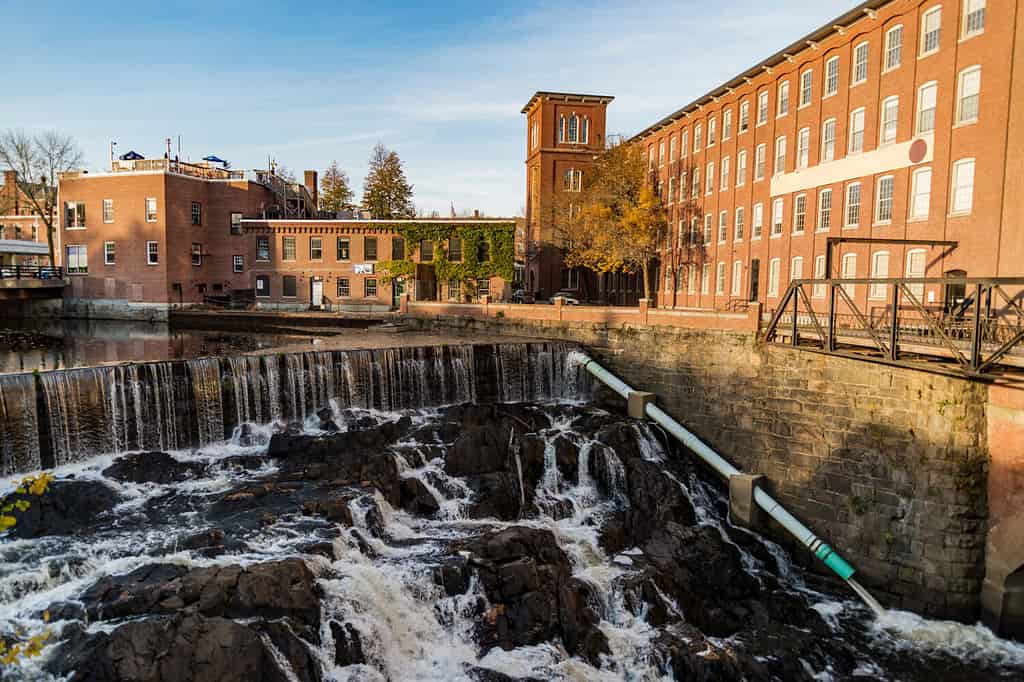
©Enrico Della Pietra/Shutterstock.com
The was the site of the first all-women’s strike in the nation. In 1828, around 600 workers at the cotton factory walked out to protest the dangerous conditions they were working in.
Girls as young as 12 years old worked in the mill for less than 50 cents a day. They were paid in scrip which could only be spent at the company store and endured toxic air and dangerous machines that caused many severe injuries. The strike was ultimately unsuccessful, with most of the striking workers returning to their jobs for even lower pay. Despite this outcome, their efforts paved the way for the U.S. labor movement.
19. Hopkinton State Fair

©aceshot1/Shutterstock.com
This annual event highlights the state’s agricultural sector with a farmer’s market, livestock shows, and horse and cattle pulling competitions. The also includes impressive displays of knitted, crocheted, and home-sewn items. Visitors can also enjoy a wide variety of activities, rides, and delicious foods.
The Hopkinton State Fair has had a long-standing partnership with the 4-H club to support young people as they explore their interests and career paths in agriculture. The 4-H Livestock Show and Auction presents the chance to purchase , , , and lambs raised by local 4-H members, with proceeds benefitting the organization.
20. Strawberry Banke Museum
This outdoor history museum explores the history of the Puddle Dock neighborhood from 10,000 years ago all the way to the present. Located in Portsmouth’s South End, visitors at the can explore nearly 10 acres that include historic homes, buildings, and shops.
The area includes a dozen gardens with unique period designs, including a formal Victorian garden and a colonial kitchen garden. Several of the buildings contain interactive exhibits, and you’ll find historical roleplayers throughout the museum who educate guests about different periods of history.
21. Fall Foliage
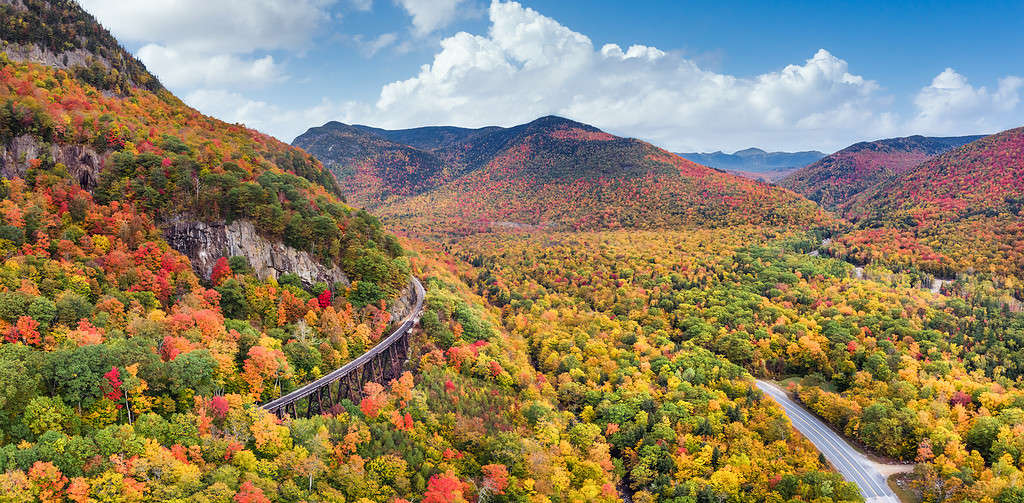
©iStock.com/Craig Zerbe
From mid-September through mid-October, light up in colors of red, yellow, and orange. There are plenty of places to see the annual display, including the White Mountain National Forest, Echo Lake State Park, and Franconia Notch State Park.
New Hampshire is the second most forested state in the country, behind Maine. Around is forested, which amounts to nearly five million acres. The most abundant types of trees in the state include , hemlock, white pine, balsam fir, and sugar maple. Forests in the state provide shelter for animals, protection for the watershed, and many opportunities for outdoor recreation.
22. Camping and Hiking
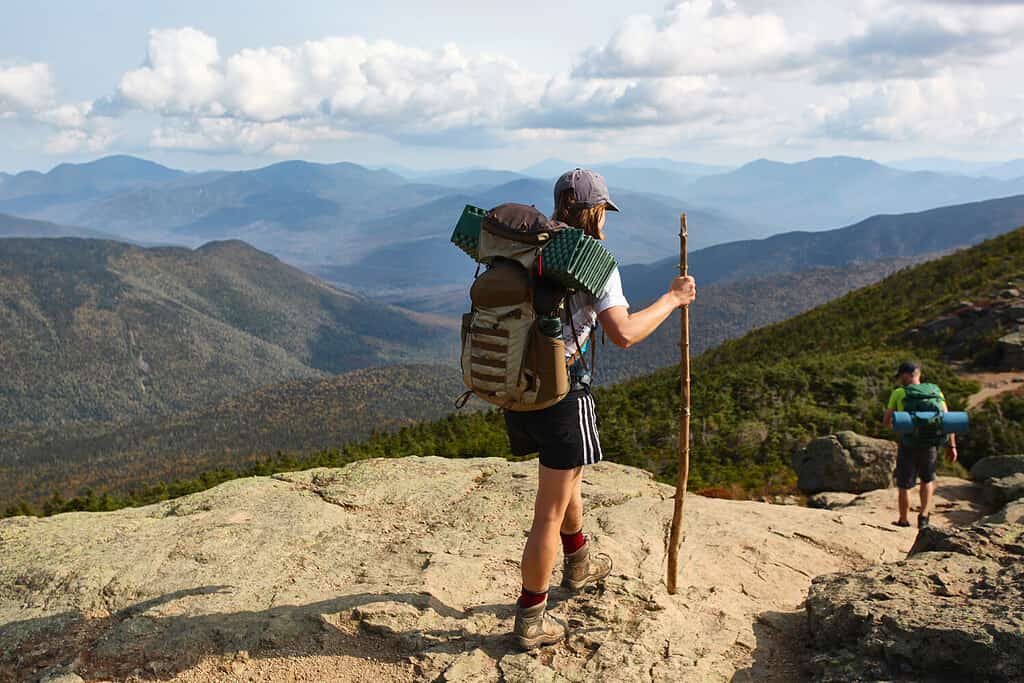
©N.Smyth/Shutterstock.com
With its abundant natural beauty, New Hampshire is an excellent state to go . The state boasts campgrounds that range from the beachfront to the mountains. Hampton Beach State Park has RV camping spots that will let you wake up just a few steps from the beach. Or, you can check out the Calef Lake Campground near Manchester if you’d like to stay closer to the city.
New Hampshire is a natural choice for . The state is home to over 85 miles of the Appalachian Trail, and there are a multitude of hiking trails for people of every age and skill level.
| Rank | Feature |
|---|---|
| #1 | Maple Syrup |
| #2 | Granite |
| #3 | The Old Man in the Mountain |
| #4 | First Public Library |
| #5 | Low Taxes |
| #6 | First to Declare Independence |
| #7 | Mount Washington |
| #8 | First Cog Railway in the Nation |
| #9 | First American Alarm Clock |
| #10 | Apple Cider Donuts |
| #11 | Castle in the Clouds |
| #12 | Lakes |
| #13 | First Wind Farm |
| #14 | First American in Space |
| #15 | State Motto |
| #16 | New Hampshire House of Representatives |
| #17 | First Presidential Primary |
| #18 | First Women’s Strike |
| #19 | Hopkinton State Fair |
| #20 | Strawberry Banke Museum |
| #21 | Fall Foliage |
| #22 | Camping and Hiking |


